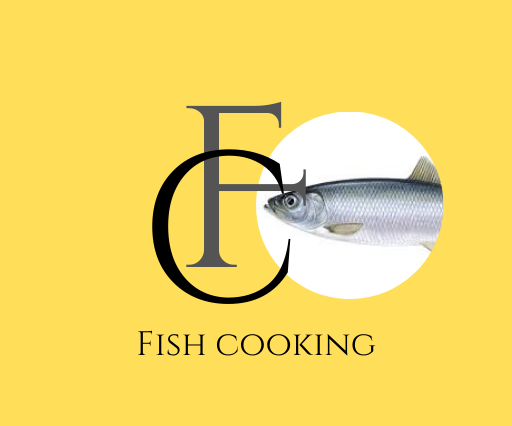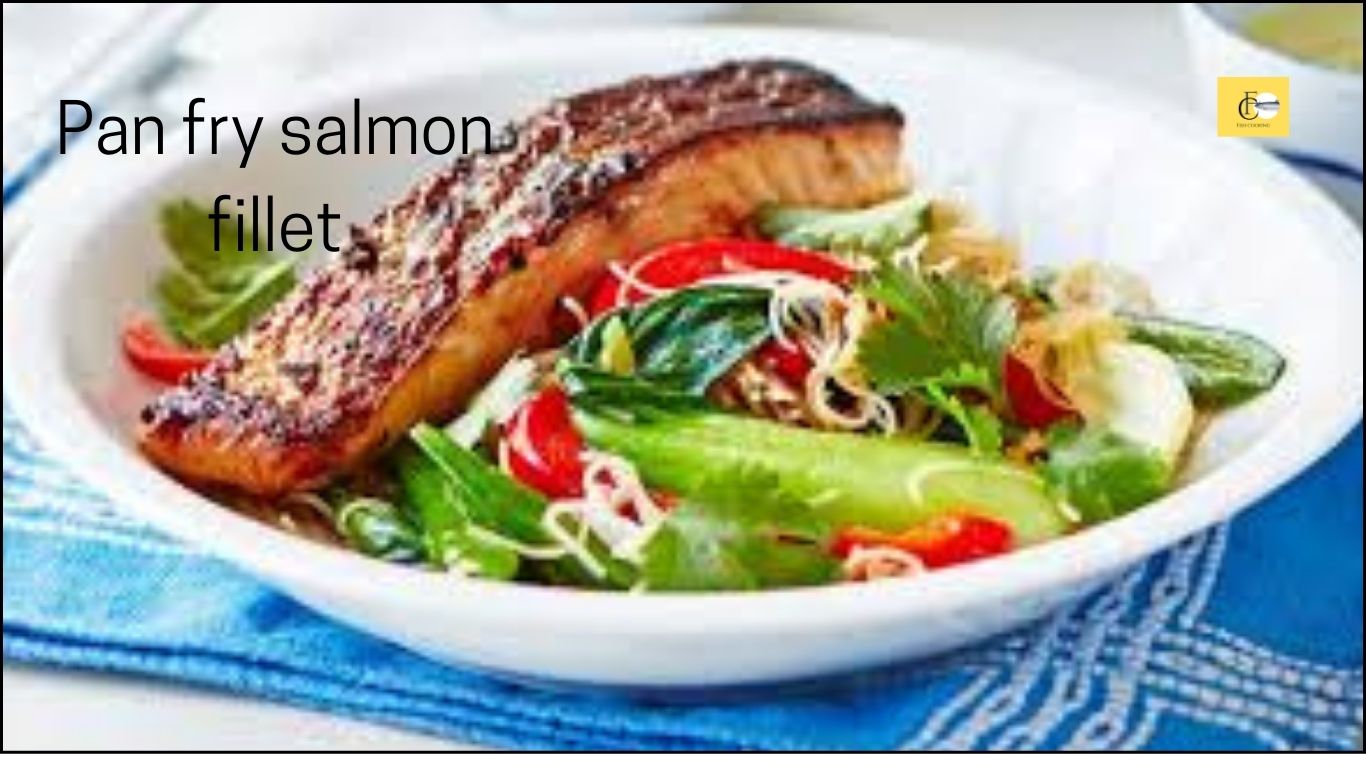Pan Fry Salmon Fillet, Salmon is one of the most popular types of fish to cook, renowned for its rich flavor, healthy omega-3 fats, and versatility. One of the best ways to enjoy salmon is by pan-frying salmon fillet, which creates a crisp, golden crust while keeping the inside tender and flavorful. Here’s a step-by-step guide to help you achieve perfectly pan-fried salmon every time.
Table of Contents
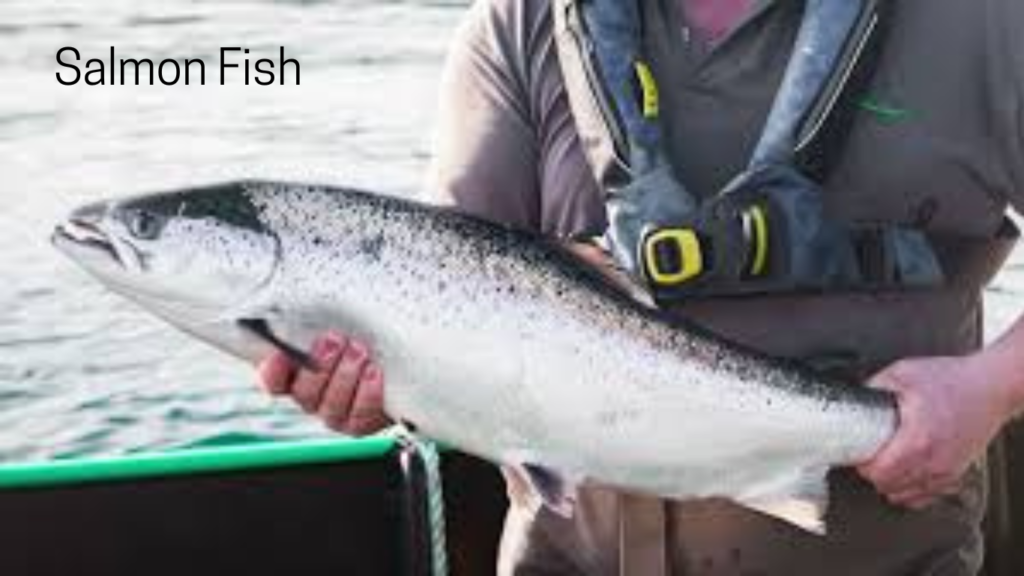
Why Pan Fry Salmon Fillet Is the Best Method for Salmon Fillets
When it comes to cooking salmon, there are countless methods to explore—grilling, baking, steaming, or even poaching. However, pan-frying stands out as the best method for cooking salmon fillets, and for good reason. This technique not only enhances the fish’s natural flavors but also delivers a perfect texture and presentation that other methods struggle to match. Here’s why pan-frying is the ultimate choice for salmon fillets:
1. Achieves the Perfect Crisp
Pan-frying salmon creates a golden, crispy skin that is irresistibly delicious. The skin acts as a natural barrier, keeping the delicate flesh moist while delivering a satisfying crunch. The key is using a hot skillet and just the right amount of oil to crisp the skin to perfection. This contrast of textures—crunchy skin and tender flesh—elevates the entire eating experience.
2. Locks in Moisture
Unlike baking or grilling, which can sometimes dry out the fish, pan-frying locks in the salmon’s natural juices. The quick cooking time and direct heat ensure the fillet stays succulent and flavorful. A properly pan-fried salmon fillet boasts a tender, flaky interior that melts in your mouth.
3. Flavor Amplification
Pan-frying enhances the flavor of salmon in ways other methods can’t. The Maillard reaction—responsible for browning—adds depth and complexity to the fish’s natural taste. You can also infuse additional flavors by cooking the fish with aromatics like garlic, thyme, or rosemary in the same pan, allowing the seasonings to meld beautifully with the salmon.
4. Quick and Convenient
Pan-frying is one of the fastest methods to cook salmon fillets. In less than 10 minutes, you can have a restaurant-quality meal on your plate. This makes it an excellent option for busy weeknights when time is of the essence but quality should not be compromised.
5. Minimal Equipment Needed
All you need is a good-quality non-stick or stainless-steel skillet, a spatula, and a little bit of oil. There’s no need for specialized equipment like grills or ovens. Plus, the stovetop method gives you better control over the cooking process, ensuring consistent results every time.
6. Versatile and Customizable
Pan-frying works well with a wide variety of marinades and seasonings. Whether you prefer a simple salt-and-pepper seasoning or a more elaborate glaze, like honey and soy, pan-frying allows the flavors to caramelize beautifully on the surface of the fish.
7. Less Clean-Up
Compared to grilling or baking, which often require additional cleaning of racks, trays, or sheets, pan-frying keeps the mess contained to one skillet. With fewer dishes to wash, you’ll spend more time enjoying your meal and less time scrubbing.
Tips for Perfect Pan-Fried Salmon
- Start with Dry Salmon: Pat the fillets dry with a paper towel before cooking to ensure the skin crisps up properly.
- Use Medium-High Heat: Preheat the skillet to medium-high for an ideal sear.
- Avoid Overcrowding: Cook fillets in batches if necessary to ensure even cooking.
- Let It Rest: Allow the salmon to rest for a minute after cooking to lock in the juices.
Pan-frying salmon is an excellent method that brings out the fish’s natural flavors and textures. Unlike other cooking methods, pan-frying allows you to create a beautifully crisp skin that provides a delightful contrast to the moist, flaky interior of the fish. This technique is quick, easy, and ideal for showcasing the delicious simplicity of salmon.
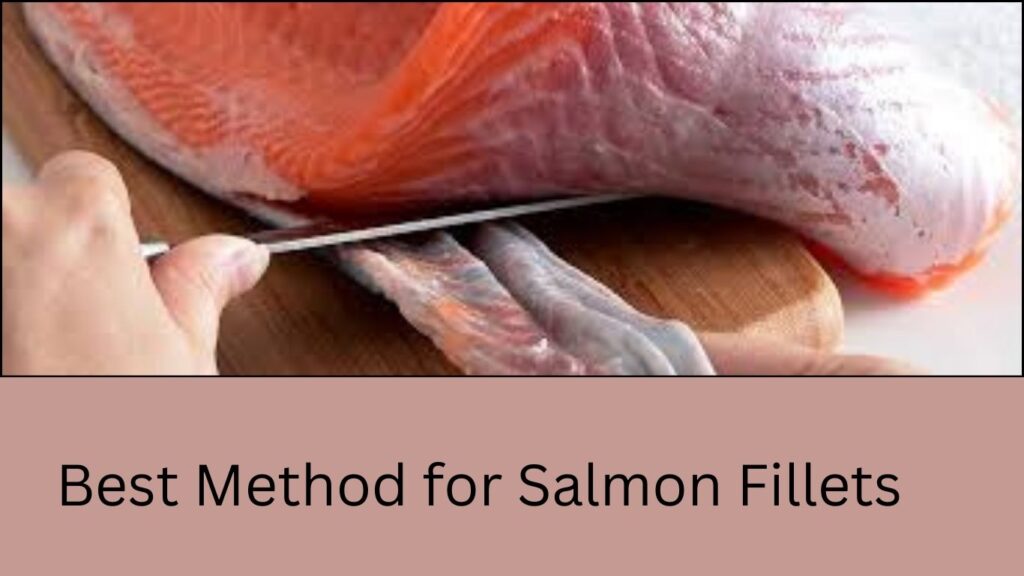
Selecting the Right Salmon Fillet
1. Fresh or Frozen Salmon?
While both fresh and frozen salmon fillets can deliver excellent results, fresh salmon is generally preferred for pan-frying because of its texture. Frozen salmon can still be delicious but should be thawed properly in the refrigerator overnight.
2. Skin-On or Skinless Fillet?
For pan-frying, we highly recommend using a skin-on salmon fillet. The skin acts as a barrier between the heat and the flesh, helping to keep the salmon moist. Plus, when properly cooked, the skin turns wonderfully crispy, adding flavor and texture.
3. Sourcing High-Quality Salmon
Look for wild-caught salmon if possible, as it tends to have a more robust flavor and firmer texture compared to farm-raised salmon. Varieties like sockeye, coho, and king salmon all work well for pan-frying, with slight variations in flavor and fat content.
Preparing the Salmon for Pan Frying
1. Pat Dry the Salmon
Before seasoning, make sure to pat the salmon fillet dry with paper towels. This step is crucial as it removes excess moisture, allowing the skin to crisp up better during cooking.
2. Season Generously
Sprinkle the fillet generously with salt and pepper. You may also add other seasonings, such as garlic powder, paprika, or a touch of cayenne for extra flavor. However, salt and pepper alone are sufficient for a delicious result, as salmon’s natural flavor is rich and doesn’t need much embellishment.
3. Add Oil or Butter to the Pan
Choose an oil with a high smoke point, such as olive oil, avocado oil, or a mix of oil and butter. Heat the oil over medium-high heat until it shimmers but isn’t smoking. Butter can add a wonderful richness to the salmon but may burn quickly, so it’s often combined with oil to prevent scorching.
Step-by-Step Guide to Pan-Frying Salmon Fillet
1. Preheat the Pan
Using a heavy, nonstick skillet or cast-iron pan, preheat it over medium-high heat. The pan needs to be hot enough for the salmon to sear on contact, which helps prevent it from sticking. A properly heated pan is one of the keys to a perfect pan-fried salmon.
2. Place Salmon Skin Side Down
Place the fillet in the pan with the skin side down. The skin acts as a barrier, protecting the flesh from drying out. As the salmon cooks, the skin will begin to crisp up, and you’ll hear a pleasant sizzle. Avoid moving the fish around in the pan to allow the skin to brown evenly.
3. Press Down Gently
When the salmon first hits the pan, gently press down with a spatula to ensure the skin makes complete contact with the pan. This helps it crisp up evenly and prevents curling.
4. Cook Until Skin Is Golden and Crispy
Cook the salmon for about 4-6 minutes, depending on the thickness of the fillet, without flipping it. You’ll know it’s ready to flip when the edges start to turn opaque, and the skin is golden brown and crisp.
5. Flip and Finish Cooking
Once the skin is crispy, carefully flip the salmon over and reduce the heat to medium. Cook for another 2-4 minutes, depending on your preferred level of doneness. The salmon should flake easily with a fork but still be moist and tender on the inside.
6. Optional: Baste for Extra Flavor
For added flavor, baste the salmon with melted butter, garlic, or fresh herbs like thyme or rosemary during the final moments of cooking. Use a spoon to drizzle the melted butter over the salmon, enhancing its richness and flavor.
Testing for Doneness
One of the best ways to check if salmon is done is by using a fork. The flesh should flake easily but still look slightly translucent in the center. Overcooked salmon becomes dry and tough, so aim for a medium-rare to medium level of doneness. A thermometer can also be used to check the internal temperature, which should reach about 125°F (52°C) for a perfect medium-rare.
Serving Suggestions for Pan-Fried Salmon
1. Accompaniments
Pan-fried salmon pairs well with a variety of side dishes. Serve it with:
- Roasted or sautéed vegetables, such as asparagus, Brussels sprouts, or zucchini.
- Rice or quinoa, for a wholesome, filling meal.
- Fresh salad with a light vinaigrette, which balances the richness of the salmon.
2. Sauces for Added Flavor
While pan-fried salmon is delicious on its own, a sauce can elevate the dish. Here are a few popular options:
- Lemon butter sauce: Mix melted butter with lemon juice and a touch of garlic for a simple, flavorful sauce.
- Dill yogurt sauce: Combine Greek yogurt, fresh dill, and lemon juice for a refreshing, tangy complement to the fish.
- Honey mustard glaze: Whisk together honey and Dijon mustard for a sweet and savory drizzle.
3. Garnishes
Finish the dish with fresh herbs like parsley or chives, a sprinkle of sea salt, and lemon wedges on the side for a burst of citrus flavor.
Health Benefits of Pan-Fried Salmon
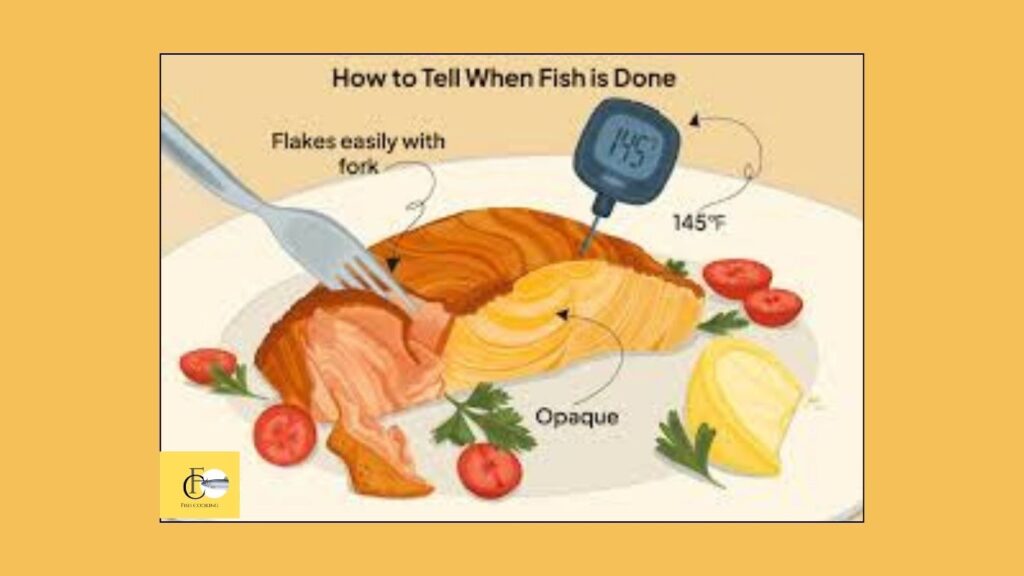
1. Rich in Omega-3 Fatty Acids
Salmon is packed with omega-3 fatty acids known for their heart health benefits. These healthy fats help reduce inflammation, lower blood pressure, and decrease the risk of heart disease.
2. High in Protein
Each serving of salmon provides a high-quality protein source, essential for muscle growth and repair. Protein-rich foods also help with satiety, making salmon a great choice for those aiming to maintain a balanced diet.
3. Source of Essential Vitamins and Minerals
Salmon is rich in vitamins D and B12, important minerals like selenium, which supports immune function, and potassium, which helps regulate blood pressure.
Common Mistakes to Avoid When Pan-Frying Salmon
1. Cooking at Too High of a Temperature
Salmon should be cooked over medium-high heat to make the skin crisp without overcooking the interior. High heat can burn the exterior while leaving the inside raw or too dry.
2. Moving the Salmon Too Soon
Resist the urge to move or flip the salmon too early. Allowing it to sit undisturbed will help the skin crisp up and make it easier to flip.
3. Skipping the Rest Period
After removing the salmon from the pan, let it rest for a minute or two. This resting period allows the juices to redistribute, keeping the salmon moist and flavorful.
Pan fry salmon fillet is a simple yet rewarding cooking method that brings out the best in this delicious fish. By following these steps and paying attention to details like seasoning, temperature, and cooking time, you can enjoy restaurant-quality pan-fried salmon at home. Whether served with a light salad, steamed vegetables, or a hearty grain, pan-fried salmon is sure to impress and satisfy.
conclusion
In conclusion, pan-frying salmon fillet is a simple yet effective way to achieve a deliciously crispy crust with a tender, juicy center. By following these steps—choosing quality ingredients, using the right pan, and mastering the cooking times—you’ll create a flavorful, perfectly cooked salmon every time. Whether served on its own or paired with a fresh side and sauce, pan-fried salmon is a versatile and satisfying dish that’s sure to impress. So, fire up the stove, enjoy the process, and savor the delicious results!
